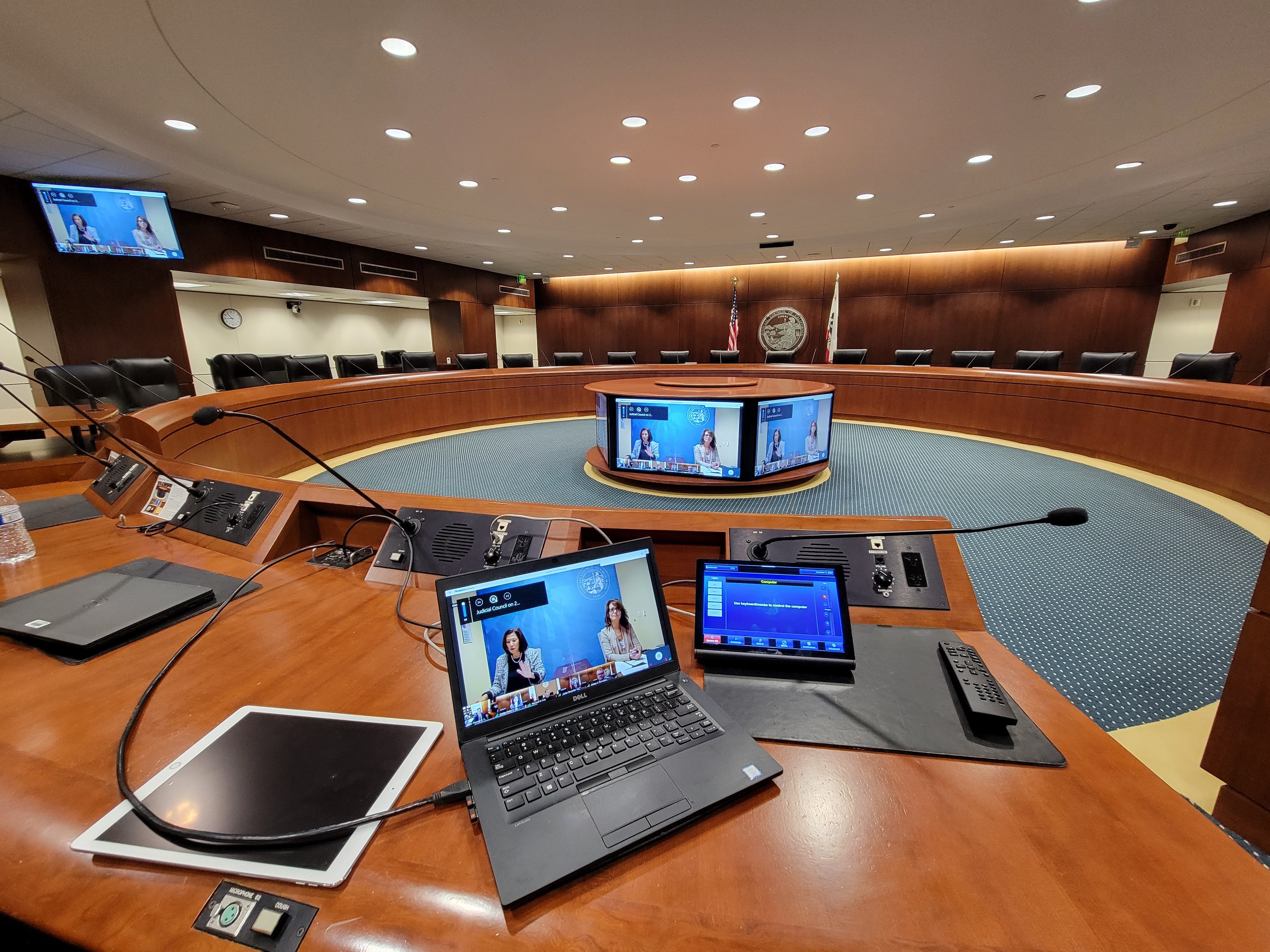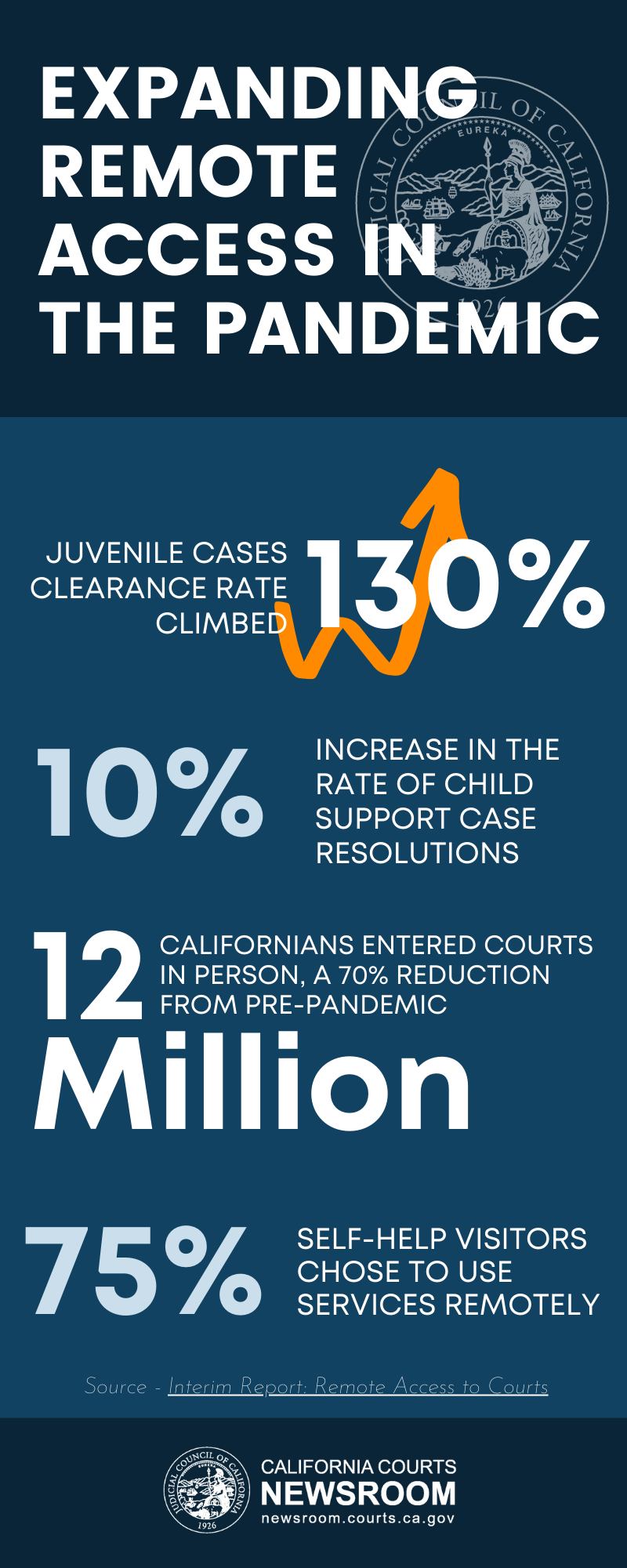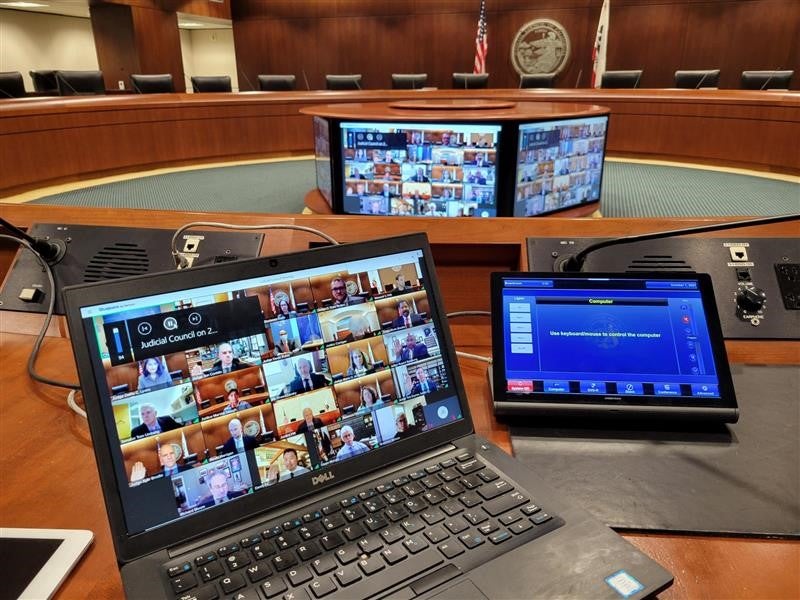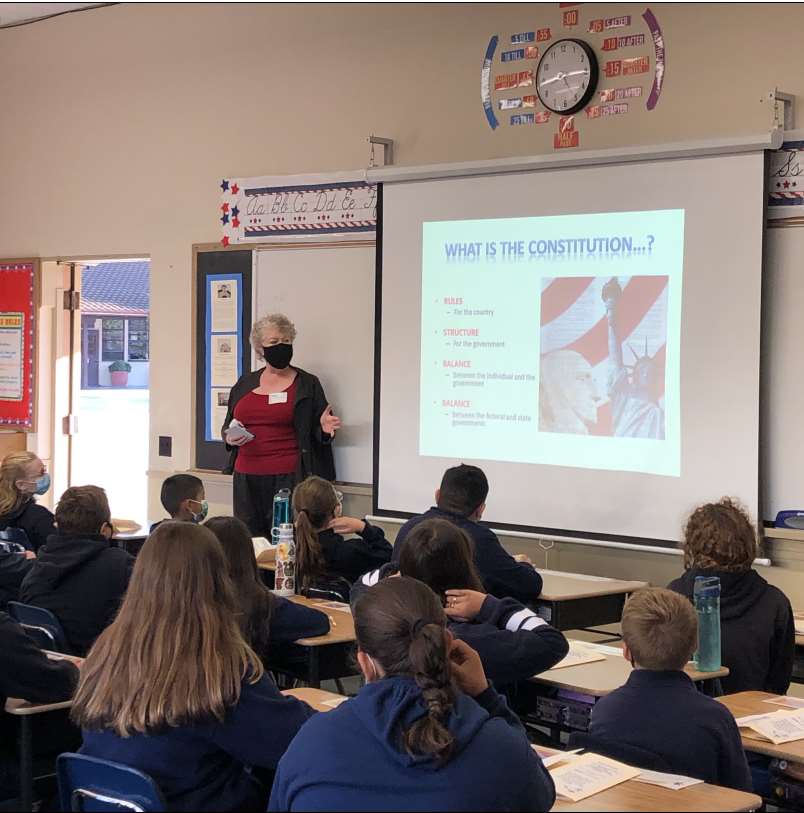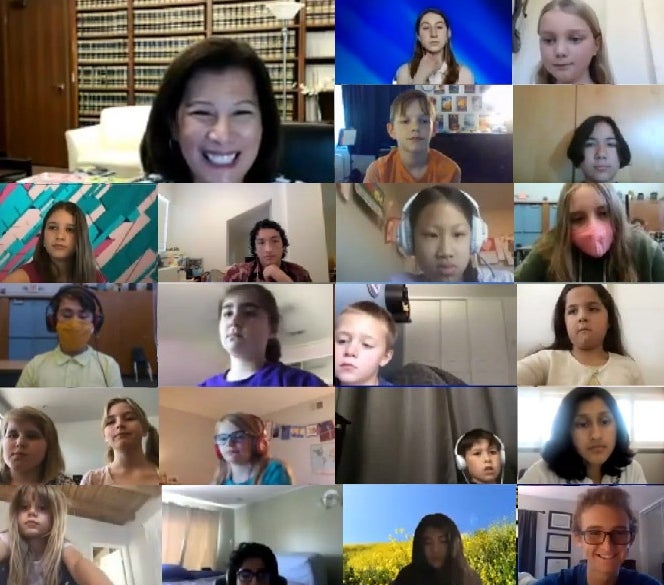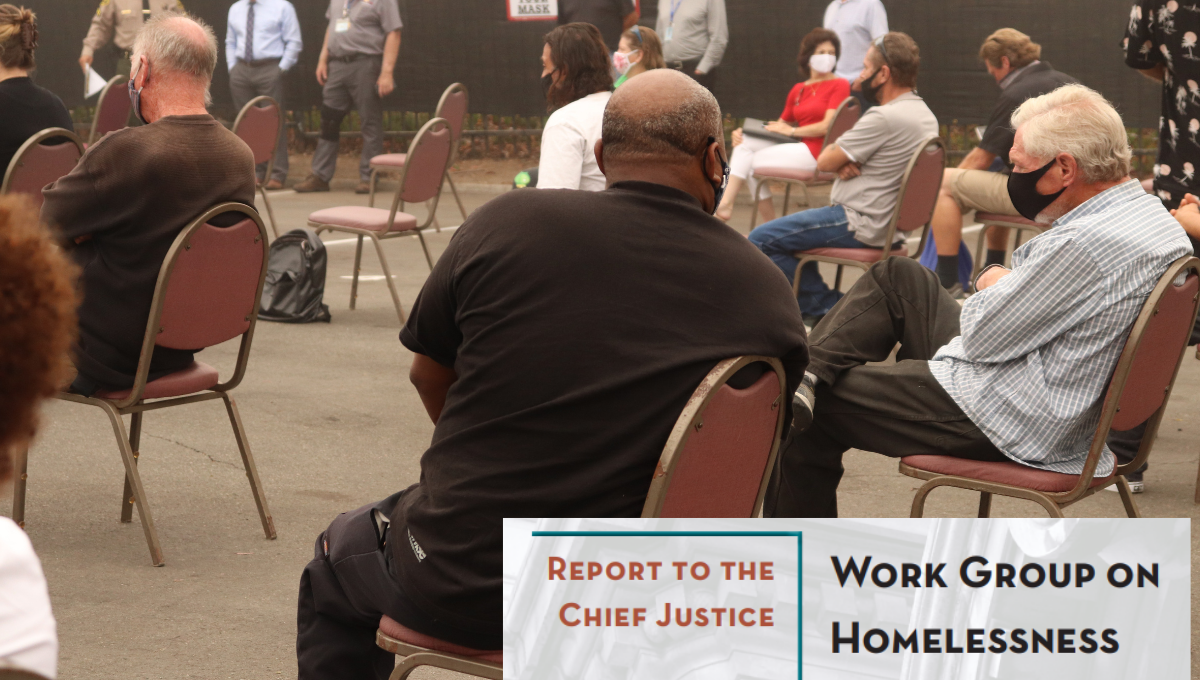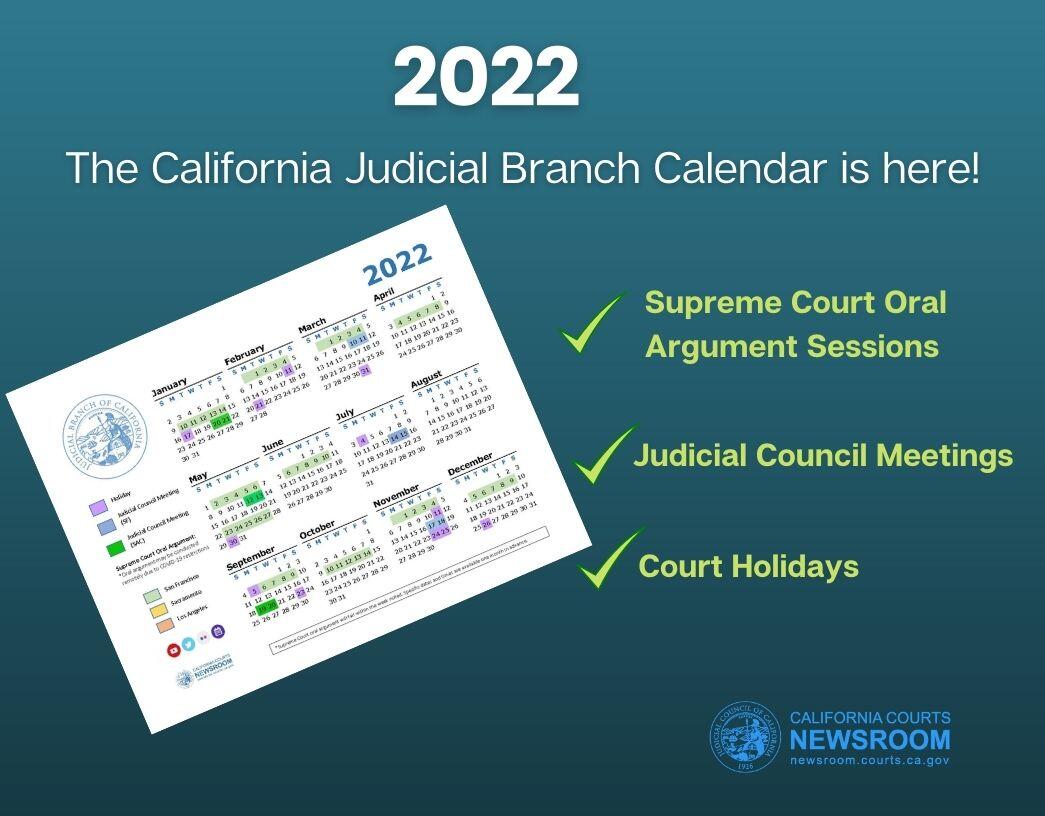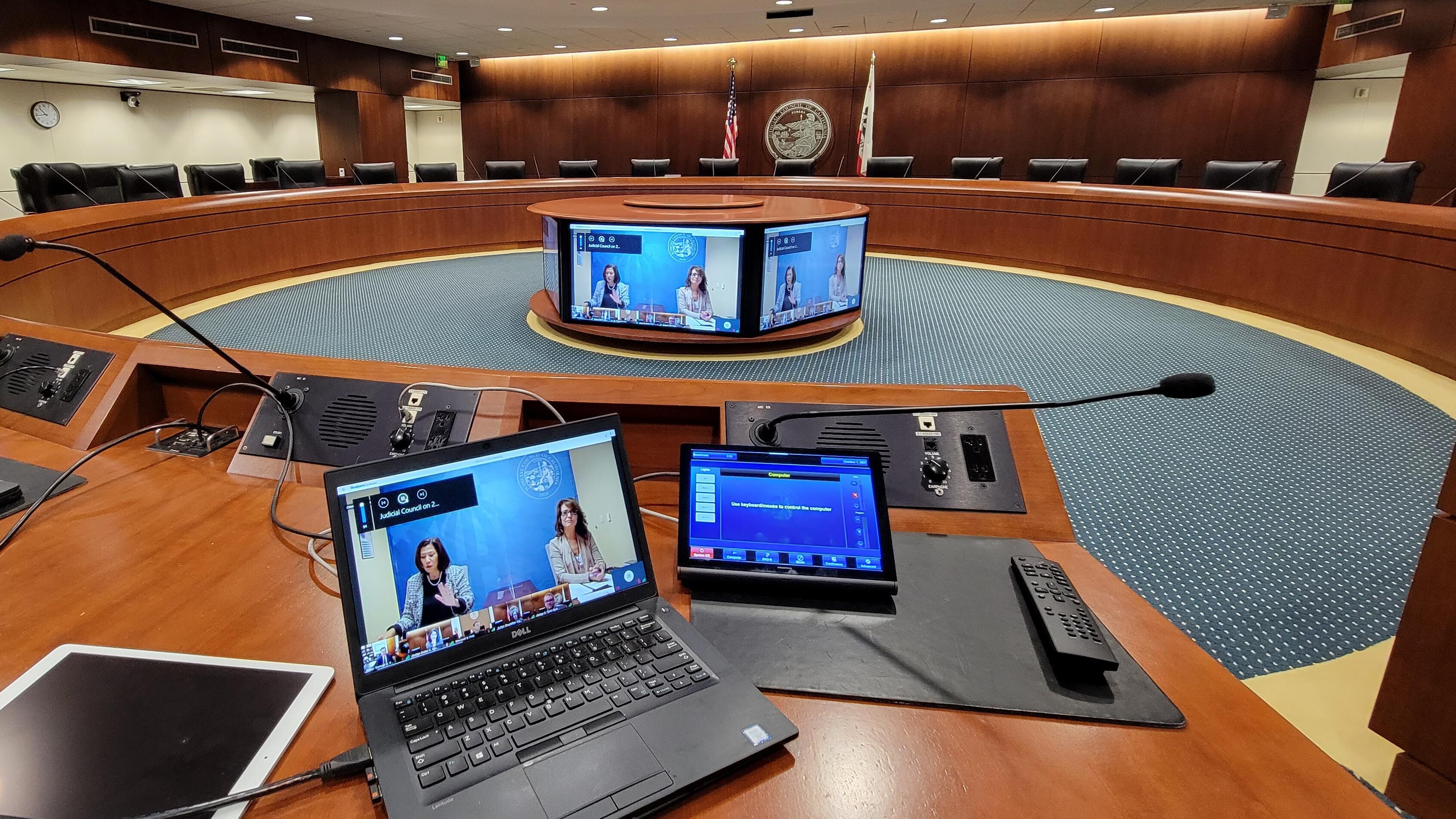
In 2021, the COVID-19 pandemic continued to challenge the state’s ability to ensure access to justice for the citizens of California. But like the previous year, California’s Chief Justice Tani Cantil-Sakauye and the Judicial Council supported the courts as they remained flexible and innovative to ensure the justice system was open and vital services remained accessible to the public.
Remote Proceedings Increased Access During Pandemic
A report from the Chief Justice’s pandemic workgroup found strong support for offering remote access on a permanent basis for most court proceedings, rather than defaulting to pre-pandemic levels of in-person operations. The report found remote proceedings often improved the court experience for testifying victims, expert witnesses, and family law litigants, as well as increased efficiency for arraignments, pretrial conferences, and progress report hearings.
The report further showed remote hearings increased efficiency:
- In areas where courts relied almost exclusively on remote video hearings—most notably juvenile delinquency and dependency cases—clearance rates climbed as high as 130%, enabling courts to handle not just current juvenile cases but also clear previous backlogs
- Remote hearings helped boost the resolution of child support cases by 10%
- In criminal and other case types, where remote hearings were used far less often, clearance rates decreased by about 20%
Resource Guide on Remote Proceedings
The council’s workgroup on post-pandemic initiatives introduced a new resource guide for judicial officers conducting proceedings by videoconference. The guide highlights practical issues to consider, such as technical equipment, file/screen sharing, language interpretation, online security, handling disruptive behavior, and public access to the proceedings. (View presentation)
Addressing Criminal Case Backlog
Chief Justice Tani Cantil-Sakauye launched a program to fast track the resolution of criminal cases to help ease significant backlogs caused by the COVID-19 pandemic. Retired judges from the Chief Justice’s Temporary Assigned Judges Program can help courts by conducting readiness conferences or cover matters for their local judges assigned to these conferences.
Court Innovations Improved Services for Public
The council’s Court Innovations Grants Program continued to fund 51 projects across 30 courts statewide, which helped the judicial branch expand remote services and address the impact of the COVID-19 pandemic on court users. Those programs led to a new statewide self-help litigant portal, creating answers to common questions for online chat bots on court websites, and expanding the use of electronic court records and e-filing.
In addition, investments in technology helped the Judicial Council develop the online MyCitations tool for infraction cases, currently available in seven superior courts around the state. The tool allows litigants with financial hardship to submit online a fine and fee reduction request. From April 2019–June 2021, more than 25,000 requests were submitted, from about 16,000 litigants. More than 80% of the requests were approved, resulting in more than $9.5 million in reduced fines and fees.
Providing Language Assistance and Resources
Californians speak more than 200 languages, about 44% of households speak a language other than English, and nearly 7 million people report speaking English “less than very well.”
The council cohosted a series of free public webinars to help connect limited English speakers with court language services and multilingual materials (view on YouTube). Court leadership and staff, local/county/ethnic bar associations, legal services organizations, law libraries, and other language access stakeholders learned how they can provide these materials directly to their communities through websites, social media channels, and hard-copy distribution at resource centers.
The council also ran print and public service announcements on how to access court interpreter services in 15 multi-ethnic print publications and 16 multilingual radio stations throughout the state.
Courts Expanding Pretrial Services
The judicial branch budget expanded funding for pretrial pilot programs that started in 16 courts to increase the safe and efficient release of people arrested before trial. The funding also helped additional courts develop their own pretrial programs. The programs promote the least restrictive release conditions while still addressing public safety and ensuring court appearances, use appropriate monitoring practices, and provide services for those released.
New Courthouse Construction
Tuolumne County opened in August.
The state budget also included $2.1 billion over five years to fund construction of critically needed new courthouses, including 14 replacement and renovation projects on a priority list approved by the council. Since assuming responsibility for court construction in 2002, the council has completed 31 new courthouse projects.
This year, the judicial branch opened new courthouses in Sonora and Yreka; broke ground in Indio, Menifee, Modesto, and Sonoma; and expects to open new courthouses next year in El Centro, Redding, and Willows.
Workgroup on Homelessness Offers Recommendations
In its final report to the council, the Chief Justice’s Work Group on Homelessness recommended ways the judicial branch could increase access and assistance for court users experiencing or at risk of experiencing homelessness, such as:
- Improving the process for litigants involved in eviction cases by increasing remote access, expanding self-help resources, and creating more user-friendly court forms with information sheets and checklists
- Providing attorneys in residential eviction cases for litigants who can’t afford them and starting and/or expanding court settlement efforts in those cases
- Expanding the number of special homeless court programs, which can reduce barriers to housing stability by clearing defendants’ fines, fees, warrants, and outstanding cases after treatment and rehabilitation (18 California counties have some form of homeless court program)
Preventing Bias in Court Interactions
The council approved recommendations from the Chief Justice’s Work Group to Enhance Administrative Standards Addressing Bias in Court Proceedings. In addition to encouraging bias reporting and education, the updated standards broaden the list of classifications protected, and define the optimal makeup and roles of local or regional committees working to prevent bias in court interactions by court staff or judicial officers.
“I see this effort as another tangible example of how the Chief Justice has tasked this council to not only improve access to justice, but to be transparent, accountable and more inclusive of the myriad of court users that enter courthouse doors up and down the state,” said Judge Stacy Boulware Eurie, co-chair of the work group.
Statewide Effort to Increase Judicial Diversity
For 15 years in a row, California’s judicial bench has grown more diverse, according to Judicial Council data. But even with this encouraging trend, nearly two-thirds of the state’s justices and judges are men and 65% are white.
Gov. Gavin Newsom in July announced the California Judicial Mentor Program as a statewide undertaking between the executive and judicial branches to advance the shared goal of an inclusive judiciary that reflects California’s diversity. That program includes an appellate court program in the First Appellate District, as well as a trial court mentor program that launched in Los Angeles in October and has expanded to much of the state. A key tool in developing the mentoring programs, the council’s Judicial Diversity Toolkit encourages courts to reach out to underrepresented groups, including individuals with diverse racial and ethnic backgrounds, disabilities, and sexual orientations.
Judges in the Classroom
As part of the Chief Justice’s Civic Learning Initiative, the Judges in the Classroom program continues to match judges with schools for in-person or remote visits with students. The visits help students understand the third branch of government and the rule of law, develop critical thinking and communication skills, and build trust and confidence in the courts that hopefully results in future willingness to participate in government as jurors, voters, and community leaders.
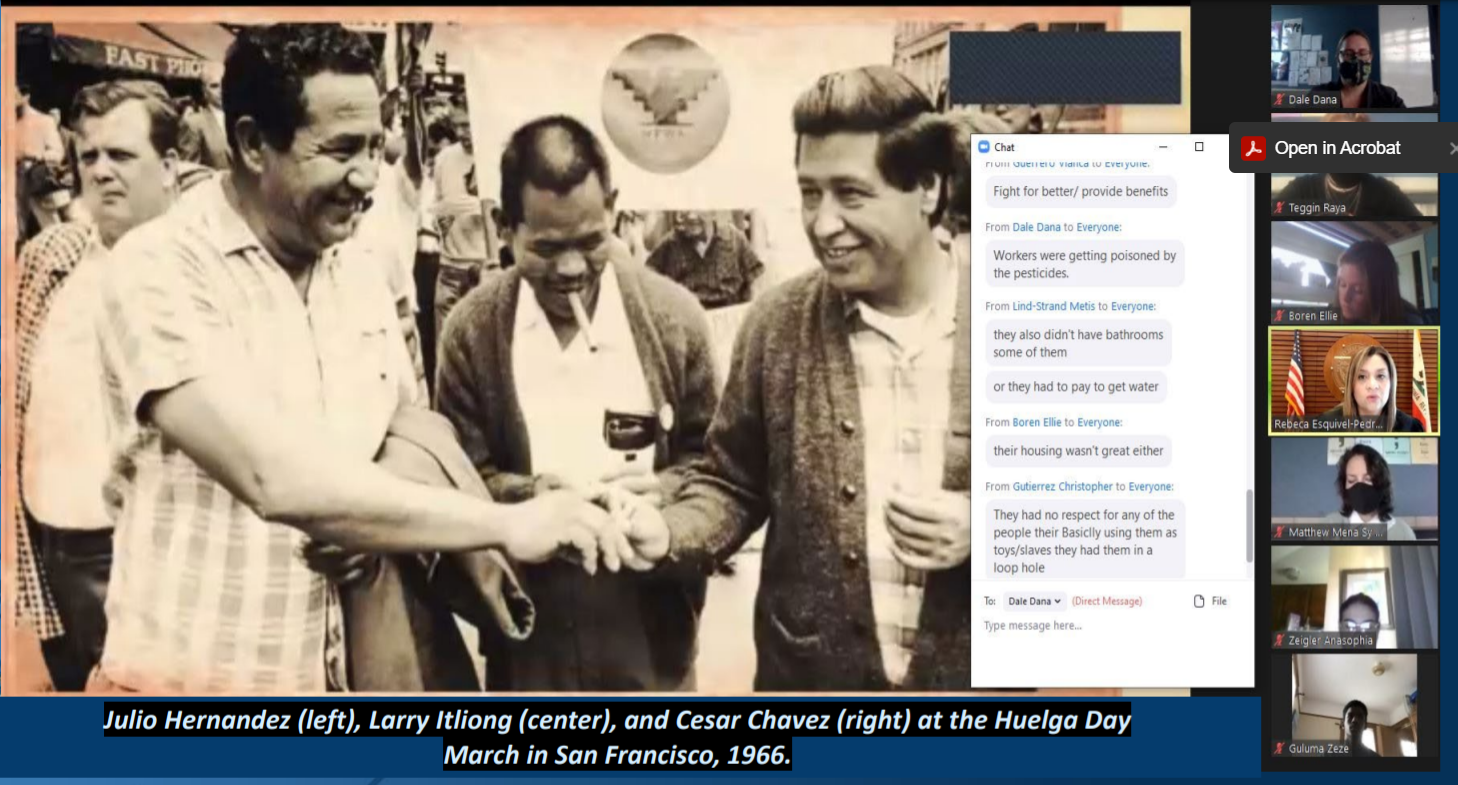
During the 2020-2021 academic year, 180 bench officers signed up for Judges in the Classroom, connecting with 181 (virtual) classrooms in 11 counties. In the first five months of the current school year, schools have submitted nearly 200 requests.
Stay connected in 2022 by subscribing to the California Courts Newsroom and Twitter feed. (See bottom of this page for links)


